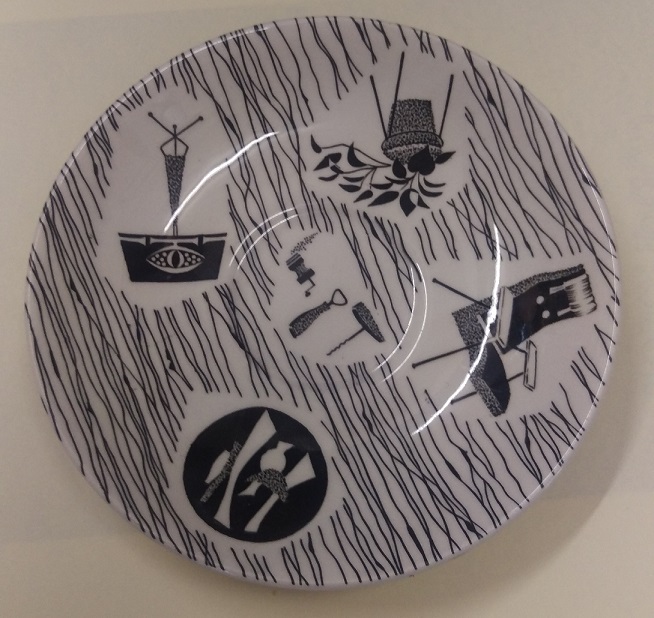Museum ID: WNDRB : 2010.47.2
A saucer from the Homemaker range made by Ridgeway Potteries, Staffordshire, produced for sale in Woolworths shops, dated approximately 1955. Items like this became popular as people began to have a little more money to spend and also a refreshing change after the rationed and dreary war years when many products were unavailable and people were trying to make do and mend. Woolworths shops offered affordable, attractive products for those with smaller budgets. Small brands were often sold within the Woolworths brand itself such as having its own Ladybird children's clothing range, Chad Valley toys, and WorthIt! value range. The chain was also the UK's largest buyer of Candyking "pick 'n' mix" sweets. There was a Woolworths shop in every town and many people remember the shops on their local high street. Buying sweets and other products from 'Woolies' as it was nicknamed is a common childhood memory for many. A great sadness was felt in many communities when Woolworths finally closed its doors in 2008-2009. The first store 'F W Woolworth & Co' Ltd was opened by Frank Woolworth in Liverpool, England on 6 November 1909. It was the first British branch of F. W. Woolworth Company, Pennsylvania, USA. By 1923 there were 130 branches, and William Lawrence Stephenson (1880–1963) became managing director, appointed by Frank Woolworth. He implemented a strategy of major expansion, with the company buying or building freehold properties. Many of the stores had distinctive tiled art deco frontages. There were about 40 stores by World War I. The 600th store opened in 1934. Growth paused during World War 2 and then continued after the war with the 800th shop, opened in 1953, reaching its maximum number of shops in the late 1960s with 1,141 stores . During the 1980s, management rationalised merchandise lines into clearly defined categories: entertainment, home, kids (toys and clothing) and confectionery. During this time many Woolworths shops were also downsized as many of the older branches in major cities were three or more floors and were sometimes almost as large as the major department stores nearby. It continued to be successful until the 1990s when it started to face competition from other similar big retailers such as Asda, Tesco and Wilkinson. It was also affected by changes in shopping habits in the late 90s such as buying music and other products on line. After nearly a decade of struggle in trying to compete with the changes, the chain went into administration in 2008 and the last stores closed in January 2009. The brand continued as an online business from later that year up until June 2015.Measurements: 24 x 144
Materials: pottery
Categorised under: Home Life and Leisure

